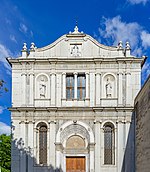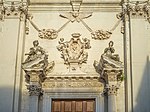Capitolium of Brixia
Ancient Roman buildings and structures in ItalyBuildings and structures completed in the 1st centuryCapitoline TriadMonuments and memorials in BresciaRoman sites of Lombardy ... and 1 more
Temples of Jupiter

The Capitolium of Brixia or the Temple of the Capitoline Triad in Brescia was the main temple in the center of the Roman town of Brixia (Brescia), in Northern Italy, in the modern region of Lombardy. It is represented at present by fragmentary ruins, but is part of an archeological site, including a Roman theater and museum in central Brescia. It forms part of the Longobards in Italy: Places of Power (568–774 A.D.) UNESCO World Heritage Site inscribed in 2011.
Excerpt from the Wikipedia article Capitolium of Brixia (License: CC BY-SA 3.0, Authors, Images).Capitolium of Brixia
Via dei Musei, Brescia
Geographical coordinates (GPS) Address External links Nearby Places Show on map
Geographical coordinates (GPS)
| Latitude | Longitude |
|---|---|
| N 45.539949 ° | E 10.225702 ° |
Address
Tempio Capitolino (Capitolium)
Via dei Musei
25212 Brescia (Zona Centro)
Lombardy, Italy
Open on Google Maps











